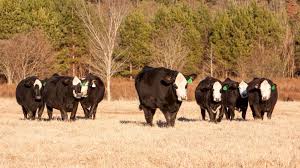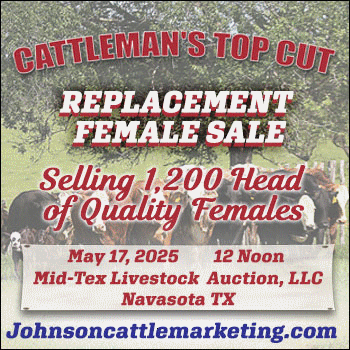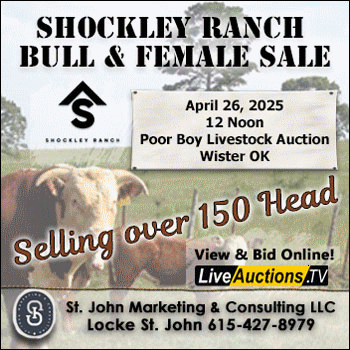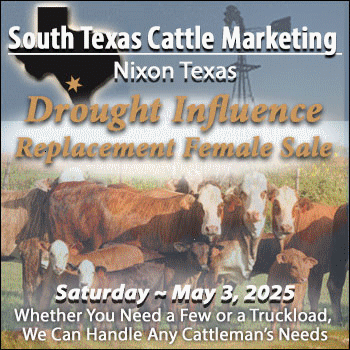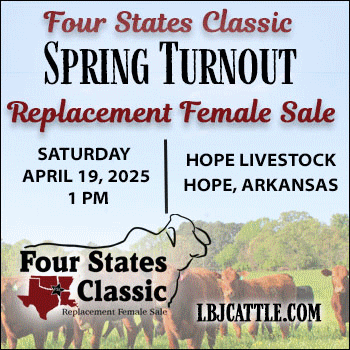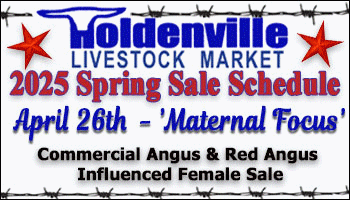Since about a decade has passed since the last herd rebuilding, the question becomes: Is the stage set for the next rebuilding?
Tyler W. Cozzens, Ph.D., Interim Director of the Livestock Marketing Information Center
The cattle and beef sectors are closely watching for signs that herd rebuilding efforts have started. Total cattle inventory levels have been on a decline since 2019 when inventory was 94.7 million head, dropping to 87.2 million head (-8%) at the start of 2024. As about a decade has passed since the last herd rebuilding, the question becomes: is the stage set for the next rebuilding?
Rebuilding efforts can depend on a myriad of factors such as drought, range and pasture conditions, feed availability and costs, and percentage of heifers on feed. Across the U.S., drought conditions have improved from a year ago. According to data for the first week of June, 26% of the U.S. was categorized as abnormally dry to exceptional drought (D0-D4) compared to 55% at the same time last year. For states like Nebraska, Kansas, Oklahoma, and Texas, drought conditions have improved considerably from a year ago.
As drought conditions have improved, so have range and pasture conditions. Data compiled by the Livestock Marketing Information Center (LMIC) indicates that U.S. range and pasture conditions rated as poor and very poor dramatically improved over last year, averaging about 23% through the month of May, an improvement over the average rating of 30%. In May, the range and pasture conditions rated as poor and very poor for the Western, Great Plains, Southern Plains, and Cornbelt regions were 15%, 12%, 24%, and 4%, respectively. Compared to last year, these same regions were much worse at 19%, 31%, 40%, and 12%. Range and pasture conditions for the Northeast and Southeast regions saw ratings track similar to last year during May.
Smaller areas categorized as experiencing drought conditions have led to improved range and pasture conditions, which in turn have supported increased hay stocks. May 1 hay stocks for the U.S. were reported by USDA NASS at 21 million tons, an increase of nearly 7 million tons (+47%) from last year. Comparatively, this was a large increase, but the 2023 May 1 hay stocks of 14.3 million tons were the lowest in a decade. This year’s May 1 hay stocks were the highest in seven years and well above the five year average (2019-2023) of about 17 million tons. As total hay stocks have improved over the last year, national hay prices have moderated lower. Alfalfa hay prices were $195 per ton in April, down $93 per ton (-32%) from last year’s record price of $288 per ton. The other hay (e.g., grass) price was $149 per ton in April, down $22 per ton (-13%) from last year.
The aforementioned factors are supportive for herd rebuilding efforts, but one additional factor to consider is the trend in percentage of heifers on feed. In the quarterly Cattle on Feed report, USDA NASS breaks out the number of steers and heifers on feed. This information is a potential indicator if herd rebuilding has started to occur. During the last herd expansion phase that began around 2014 and lasted through part of 2016, heifers on feed as a percentage of total cattle on feed ranged from about 31%-35%, indicating producers were holding back heifers to rebuild the herd. This led to total cattle inventory levels rising from 88.2 million head in 2014 to a peak of 94.7 million head (+7%) in 2019. The most recent quarterly breakout from the April Cattle on Feed report showed that 39% of the total cattle on feed were heifers, well above the 31% seen during the last expansionary phase. In fact, since 2019, the percentage of heifers on feed as a proportion of total cattle on feed for each quarter has ranged from 38% to 40%.
Across the U.S., improved drought conditions have led to better range and pasture conditions compared to last year. Improved range and pasture conditions across cattle producing regions of the U.S. have led to larger hay stocks, which has resulted in reduced feed costs. These factors support herd rebuilding efforts. However, the current percentage of heifers on feed does not indicate that significant, national herd rebuilding efforts are underway. When the percentage of heifers on feed starts to decrease, then this could signal that the stage is set for producers who intend to hold back heifers and to start expanding the herd.
